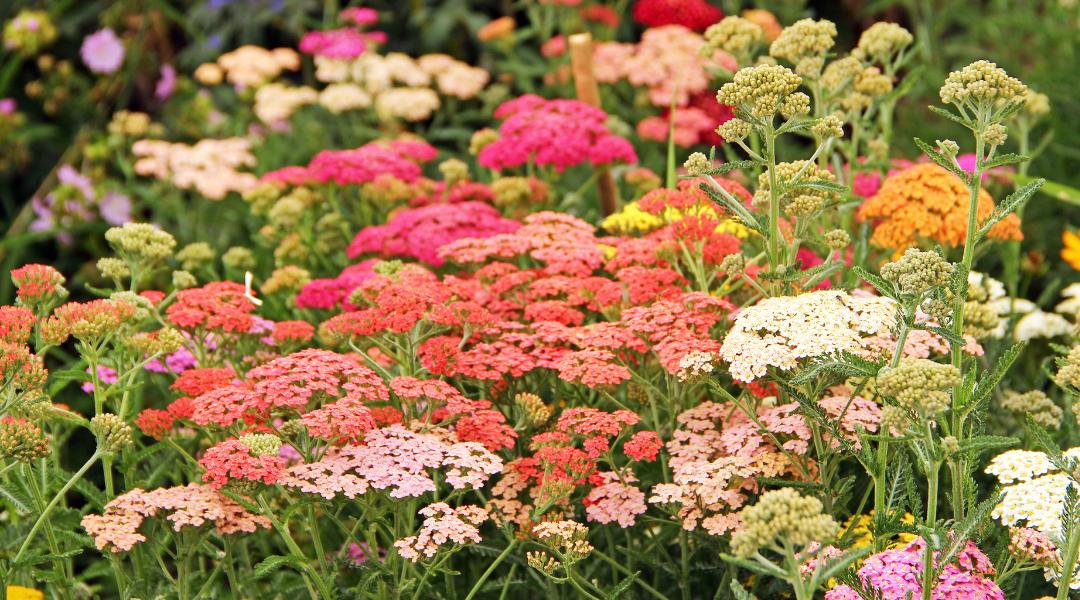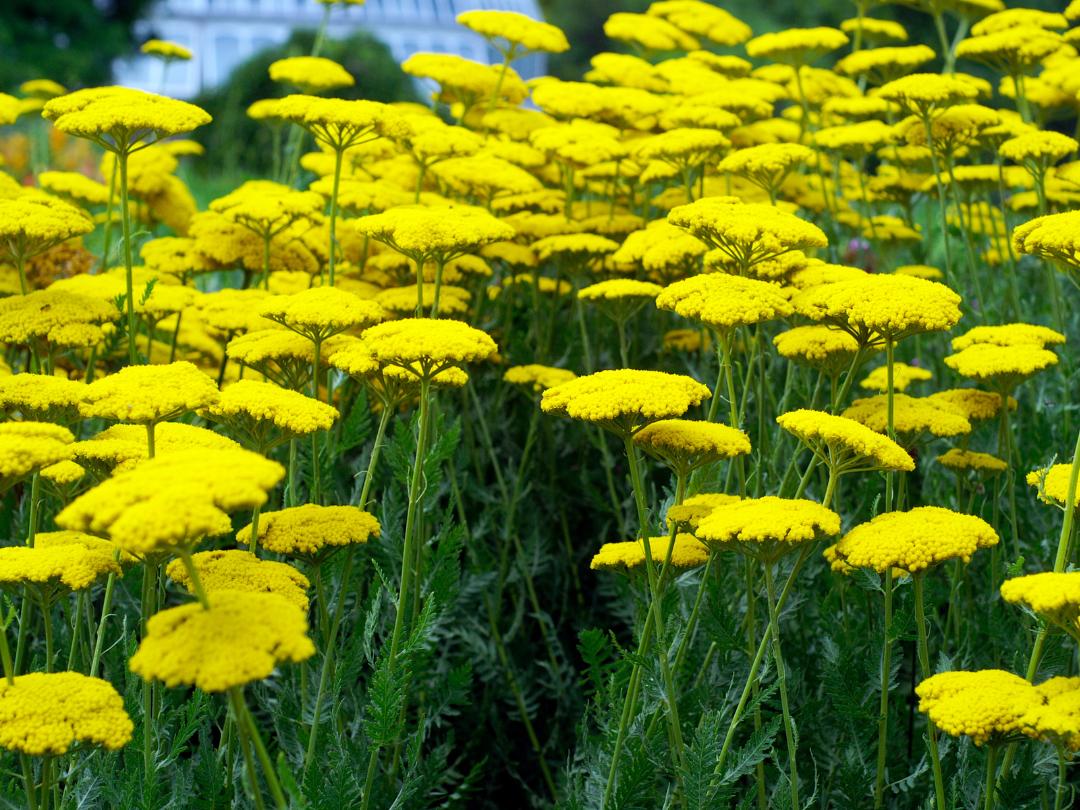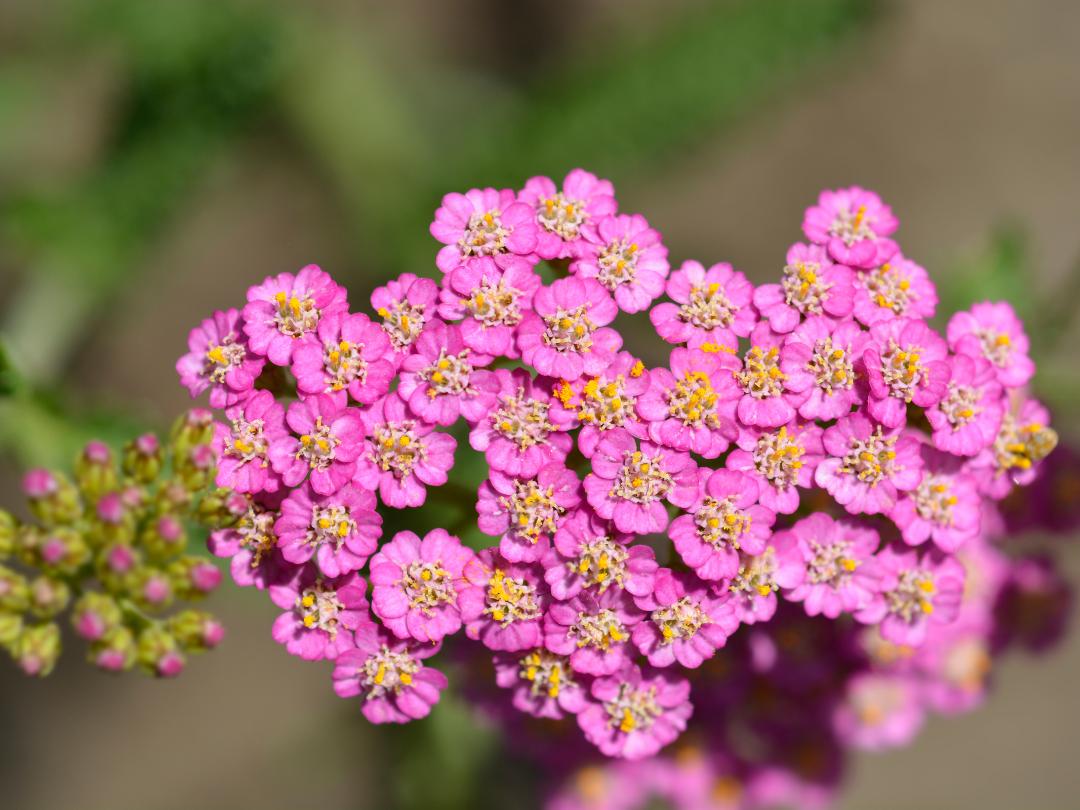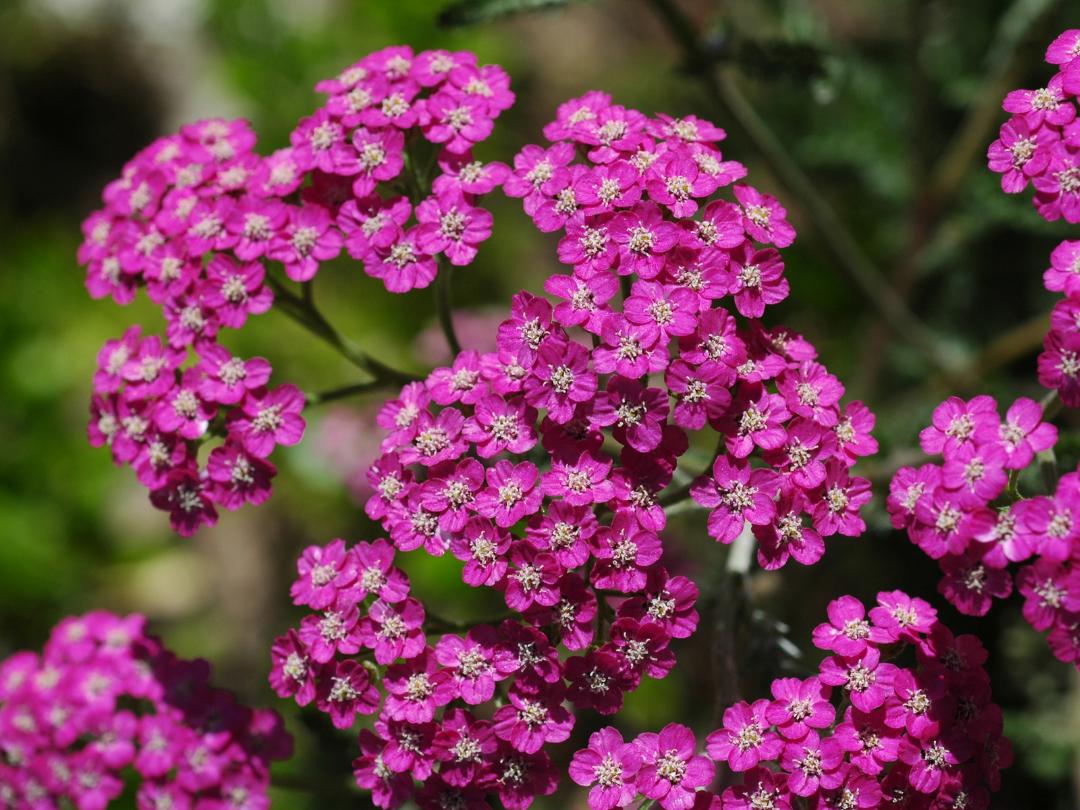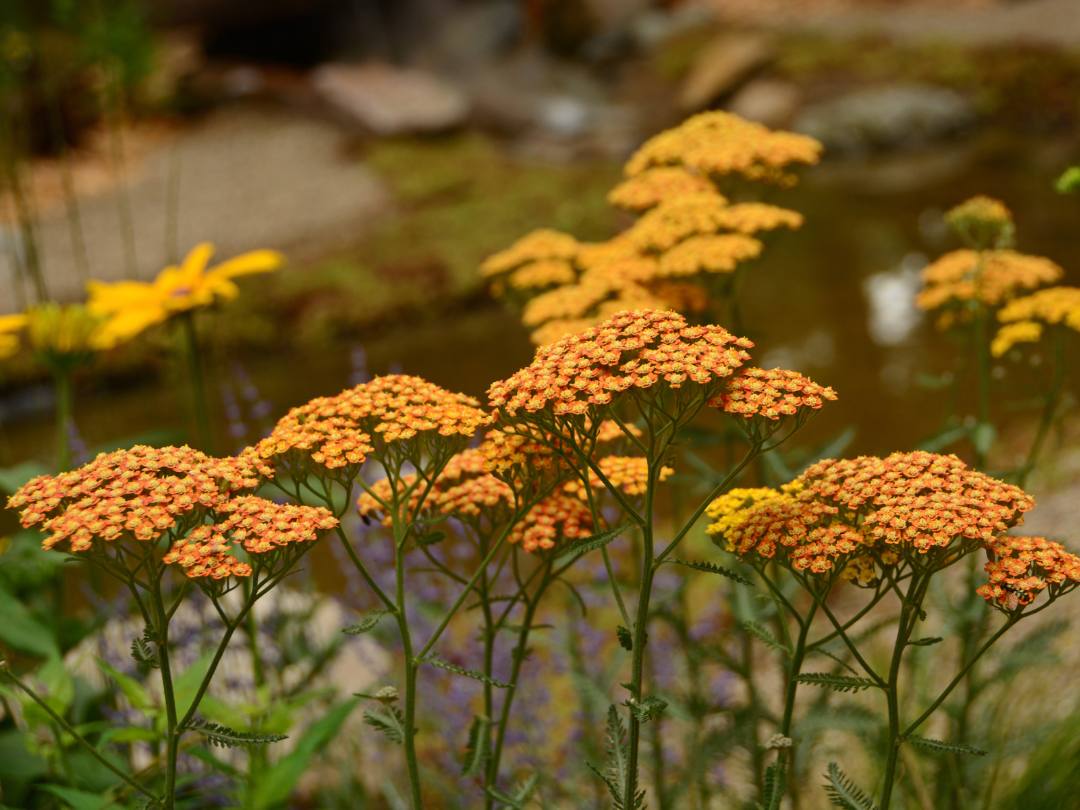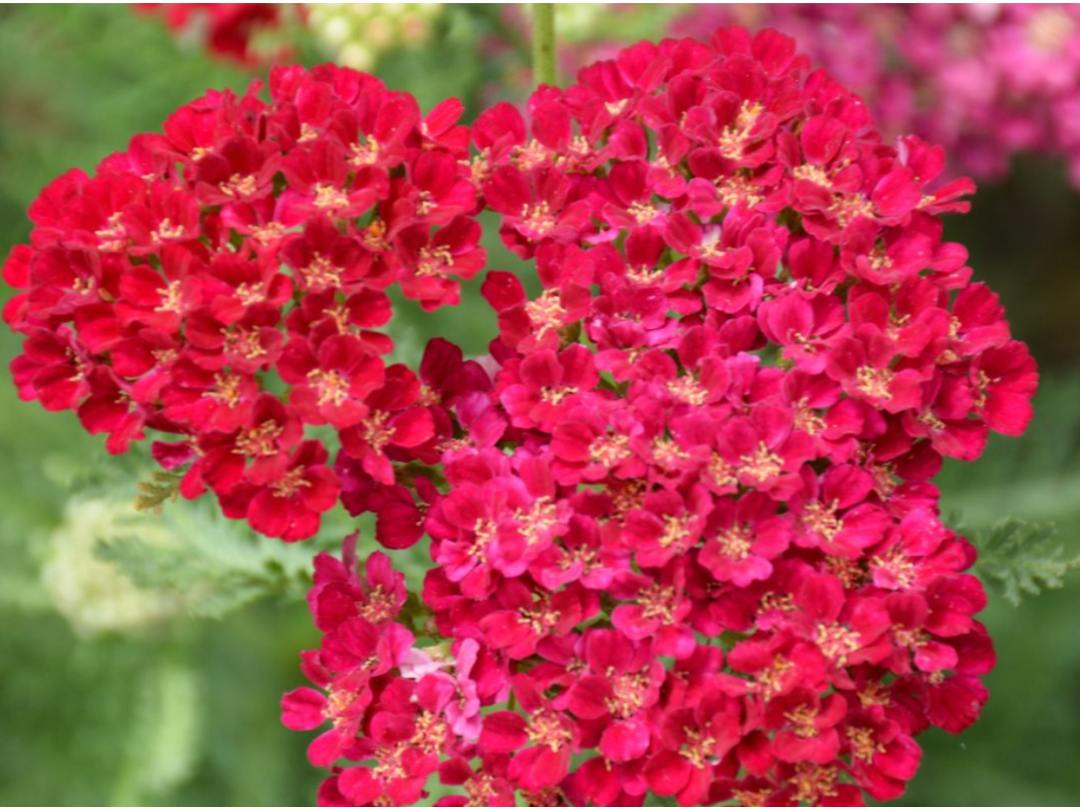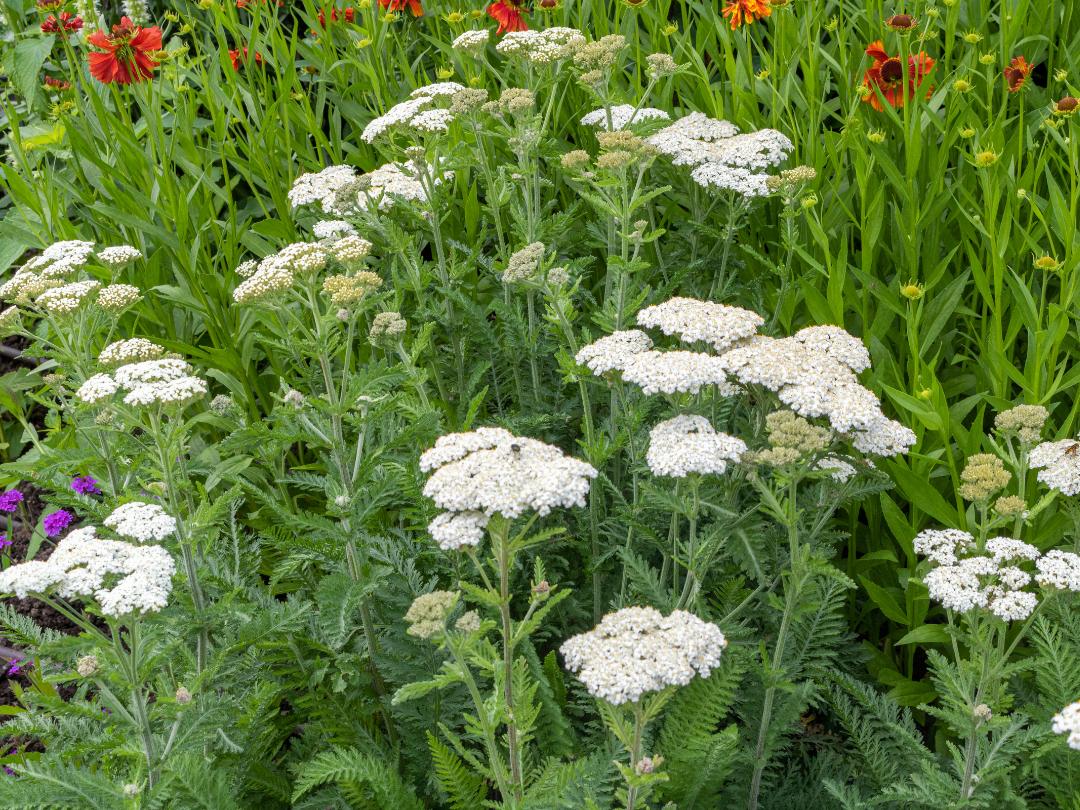Greek mythology would have it that the warrior Achilles was dipped, by his mother, in yarrow-laced water to give him some immortality. Legend also had it that she held him by his ankle when he was dipped in the magical water. (This does seem a reasonable way to dip someone.) So, the part of his body that did not touch the water was to become his weak spot, his ‘Achilles heel’.
Legend also has it that Achilles would use yarrow on the battlefield to heal wounded soldiers. The leaves of the yarrow would be used as a compress against a wound to stop the bleeding.
The long history of medicinal uses is still true today. Yarrow has many uses in contemporary herbalism. Yarrow is also used simply for its beauty in the landscape.
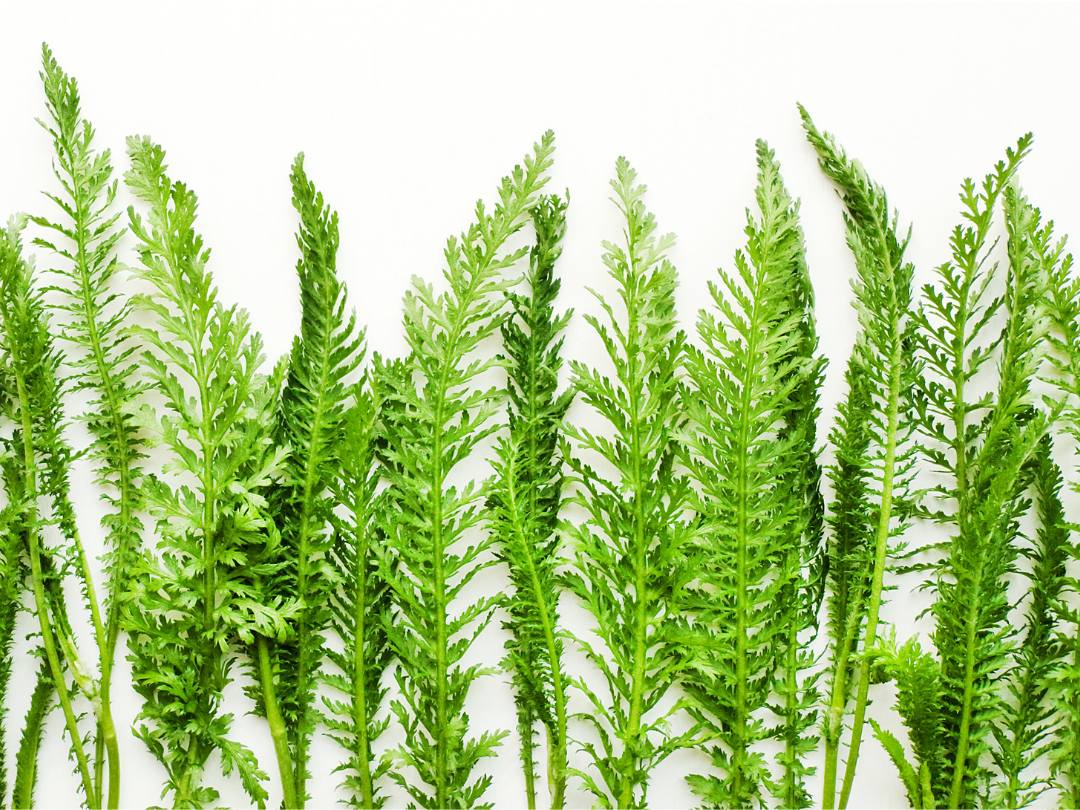
Harking back to this legend, the botanical name for yarrow is Achillea (a-KIL-lee-uh) millefolium. Millefolium is Latin for thousand leaves. These very fine leaves do look like a lot of leaves.
There are many common names for yarrow, including milfoil, thousandleaf, soldier’s woundwort, bloodwort, nose bleed, devil’s nettle, sanguinary, old-man’s-pepper and stenchgrass. I guess if you’ve been around as long as yarrow, you’re going to collect a few nicknames.
Milfoil and thousandleaf seem obviously connected to the leaf of the plant. Soldier’s woundwort, bloodwort, and nose bleed appear connected to the plant’s ability to staunch blood flow. That leaves (no pun intended) devil’s nettle, sanguinary, old-man’s-pepper, and stenchgrass. Stenchgrass?
Devil’s nettle stemmed from “an old superstition that Satan used to walk the streets at night and shake yarrow at homes of those he wished to curse.” It was believed to be one of the devil’s favorite plants.
Old Man’s Pepper was a name used for the plant, because the flowers and leaves are so pungent they were used as snuff.
Yarrow In the Garden
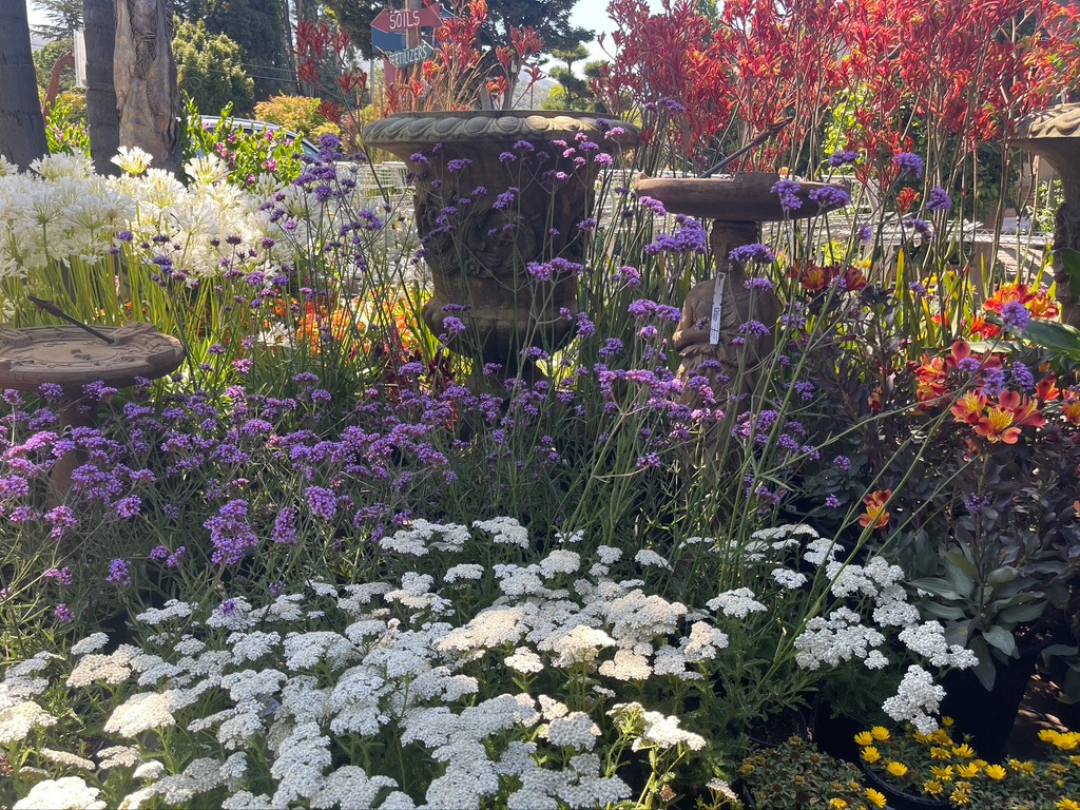
Yarrow is often a very tolerant and forgiving plant in the garden. It is tolerant of cold, drought, heat, and even poor soils. It does not, however, like to be in soggy soil. This easy-to-grow herb is good to grow in zones 3-9, and it can even make it in zones 2 and 10 in the right location. That’s a pretty hardy geographical area.
Yarrow makes a perfect plant for a low-water sunny planting bed. In the image above, you have a white yarrow (Achillea Vintage White) in the foreground. The purple is verbena, with white agapanthus and kangaroo paw in the background.
Yarrow is also used as a drought tolerant lawn alternative. In some areas, it grows so aggressively it is considered a weed. Yarrow is also deer and rabbit resistant (although, it would be a very desperate critter to eat the bitter leaves of yarrow).
Most yarrow gets 12”-36” high and 12”-18” wide. While you can buy yarrow in pony packs and small containers, it is mostly planted by seed. You can direct sow this perennial into the soil in the fall or spring. The many cultivars of yarrow have given us a variety of colorful summer blooms, ranging from white, yellow, and orange to pink, purple and red.
One of the many benefits of planting yarrow in your garden is the beneficial life it lures. Achillea millefolium attracts bees, butterflies and hummingbirds. It also attracts humans! It is fragrant, edible, medicinal, and a glorious cut flower – whether fresh or dried.
Beyond White Yarrow: A Variety of Hues
Yellow Yarrow
This would be your Moonshine Yarrow, Achillea x ‘Moonshine’. There is also Little Moonshine Yarrow. This yellow yarrow has the highly memorable scientific name of Achillea millefolium ‘ACBZ0002’ PP #28,179. This is a new dwarf Moonshine yarrow.
While Moonshine Yarrow gets to 1’-2’ tall and 2’ wide, Little Moonshine Yarrow only gets to 14” tall and 16” wide. Both yellow yarrows have canary yellow flowers on narrow stems with a base of ferny, grey-green foliage.
There are other yellow yarrows to choose from. There is also Dessert Eve (Trade mark) Yellow Yarrow. This plant has the catchy botanical name of Achillea millefolium ‘Desyel’ PP #22,369. This is a fast-growing yarrow that reaches 14″ -18″ tall and wide.
Pink Yarrow
There is Achillea millefolium ‘Pink Grapefruit’, which is a pink yarrow that stars a bright rose color and fades to a creamy pink. This pink yarrow gets to 2’ tall and wide.
Achillea millefolium ‘Sassy Summer Taffy’ is another pink yarrow. It has dark salmon pink flower clusters that age to a soft peach color. This pink yarrow can reach 32” tall and 26” wide.
I have moved Achillea millefolium ‘Cerise Queen’ around on this list. “Cerise Queen’ started in red, then moved to pink and then to purple and then back to pink. The flower of “Cerise Queen’ seems to spend most its time as a deep pink flower and gets to 20”-30” tall. You could also call it a magenta flower. This is not one of your softer pastel colors.
Achillea millefolium “Salmon Beauty’ is a very soft pink, which fades into even softer pink and buttery yellow.. This is a lovely pastel colored yarrow. It is known to bloom late spring through fall and gets up to 2’ tall and 3’ wide.
Violet & Purple Yarrow
Achillea New Vintage™Violet (New Vintage™Violet Yarrow) is a compact, long-blooming yarrow cultivar, blooming from late spring to late summer. The blooms are a showy violet-magenta. This smaller yarrow plant reaches 14” tall and 12” wide. This is not a soft pastel!
This cultivar of violet yarrow does not reseed, and it was given the harmonic botanical name of Achillea millefolium ‘Balvinviolet’ PP25750.
Orange Yarrow and/or Orange-ish Yarrow
While I’m going to go ahead and use orange to describe these flowers, most are really more nuanced than that.
Let’s start with Achillea millefolium ‘Sassy Summer Sunset’. This yarrow has large dark orange flowers and grows to 30” tall by 36” wide. The flowers age into a yellow.
An even taller orange yarrow, Terra cotta Yarrow, is going in this category with its earth-tone shades of gold, apricot, orange, and terracotta. This gem gets to 3’ high and 2’ wide.
‘Firefly Peach Sky’ Yarrow is going to go in this category too. These blossoms are a soft peachy orange, which fade to a mellow yellow. This is a pastel and soft colored bloom. It gets to 3’ high and 32” wide. This orange yarrow has the scientific name of ‘Firefly Peach Sky’ Achillea hybrid USPP 32,404, Can PBRAF.
Red Yarrow
There are many types of red yarrow to brighten up your garden! Many of these flowers fade, but some keep their red even when dried.
There is Achillea Desert Eve Red which has brick red flowers. It reaches 20” tall by 20” wide. This red yarrow is an early bloomer, blooming from late spring to late summer.
Achillea ‘Summerwine’, with its wine-red flowers, gets up to to 36” tall and 20” wide. This yarrow was given the Award of Merit of the Royal Horticultural Society. The blooms start in the beginning of summer and then fade to a soft pink.
Achillea millefolium ‘Paprika’ is a stunning red yarrow with flowers that fade to a light pink then creamy yellow as they age. There is a yellow eye at the center of each small flower. This red yarrow gets to 2’ tall and wide.
There is also the very lovely Achillea millefolium ‘Red Velvet’ or Red Velvet Yarrow. This brilliant yarrow get to 3’ tall and 3’ wide. The color of this red yarrow flower remains when the flower dries.
White Yarrow
Now let’s talk white yarrow. Achillea millefolium is White Yarrow or Common Yarrow. Because Achillea millefolium is usually white. It is a durable, easy-to-grow, useful, and attractive native to California gardens.
This yarrow is also used as a drought tolerant lawn alternative.
Even though it’s white, there are still choices!
Achillea millefolium ‘Sonoma Coast’ White Yarrow is a perfect choice for a compact yarrow, getting to 1’ tall and 2’ wide.
Achillea millefolium New Vintage White, also known as Achillea millefolium “Balvinwite’, is a narrow, upright yarrow that’s white with a creamy center. This yarrow gets to 2’ tall and only spreads to about 1’. Perfect for those small sunny spots.
Yarrow Seeds
Can’t decide which color yarrow to plant? You don’t have to! You can buy yarrow seed mixes. One popular mix of yarrow seed is Colorado mix, which has a variety of colors. Summer TM Pastels is another yarrow seed mix with softer pastel toned yarrow.
Yarrow is easy to start from seed. Once established, it will often spread through the garden by self-seeding and rhizomes (note that not all cultivars will self-seed). Johnny’s Selected Seeds sells yarrow mixes, as do plenty of nurseries and online stores.
Using Your Yarrow
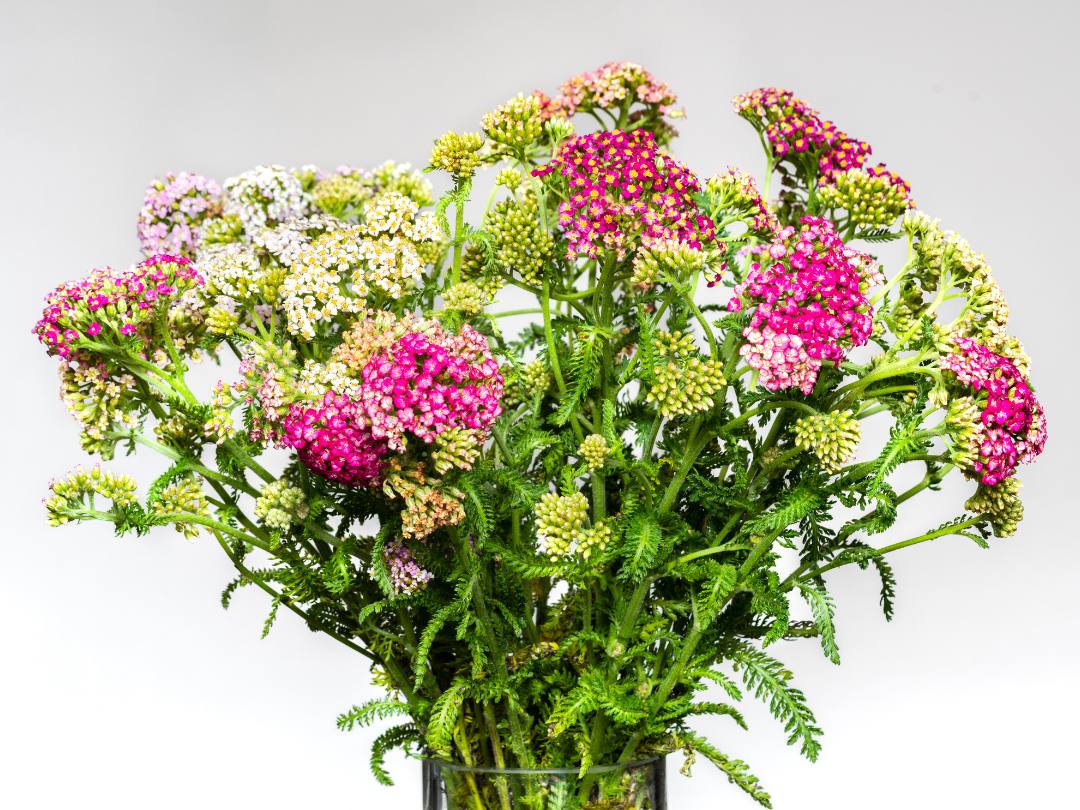
Long and sturdy stems make Yarrow a desirable upright flower for bouquets. The image above is a fresh yarrow bouquet, but yarrow is also often used in dried floral arrangements.
The entire yarrow plant is edible. But while the smell may be sweet, the taste is more bitter — so it should be used very sparingly.
In Sweden, yarrow is known as Field Hops and was used to make beer. I’m afraid I don’t have that recipe to share with you.
How to Make Yarrow Tea
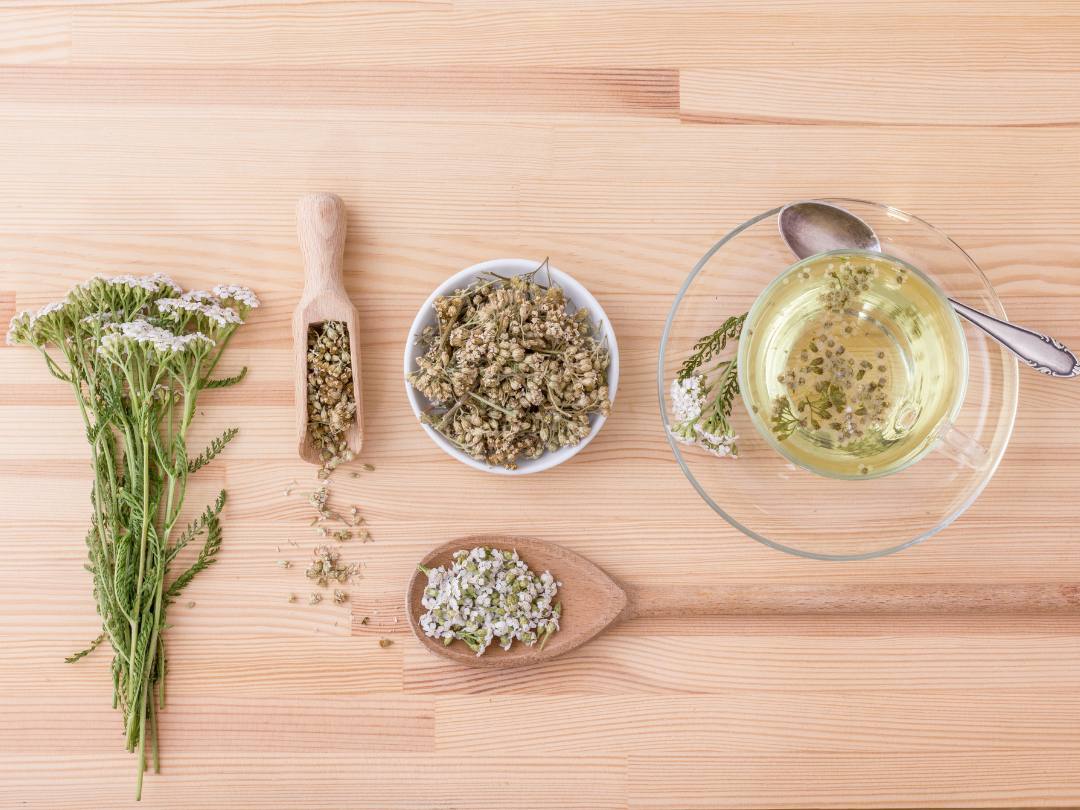
To make an infusion of yarrow, cover 2 teaspoons of dried or fresh yarrow flowers with one cup of boiling water and let it steep in a covered pot for 5-10 minutes. Then strain the tea into a cup.
The tea is said to stimulate digestion. An infusion of yarrow is also used to help improve menstrual flow that is too light or too heavy.
How to Prepare a Yarrow Bath
Steep about 3 oz. of dried yarrow leaves in a pot of water for about 20 minutes, strain, and add to your bath. Yarrow baths are used to soothe the skin — and are often mixed with epsom salts, rose petals, or sea salts.
What Is Blue Yarrow?
There is no blue yarrow in nature. That is, there are no yarrow seeds that yield blue yarrow flowers. If you see blue yarrow, you’re seeing yarrow that has been dried and tinted or painted blue.
But blue yarrow is a thing!
“Blue yarrow” is used to describe the essence of yarrow — the oil distilled from Achillea millefolium. It’s a popular essential oil that becomes a vivid, deep blue in the distillation process.
Yarrow oil has many health benefits. It is known to reduce inflammation, treat skin conditions, and alleviate rough and reddened skin. The scent of blue yarrow is sweet and herbaceous. In aromatherapy, it is used to lift the spirit and get rid of the . . . blues.
We partner with select companies whose products and/or services we love. Some of the links on this page may be affiliate links. If you purchase an item using our affiliate link, we may receive a small commission (at no added cost to you). We appreciate your support.

